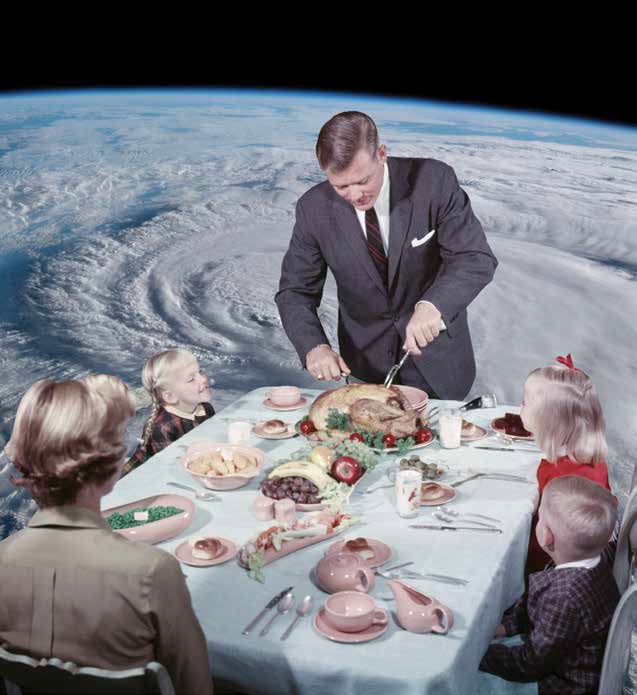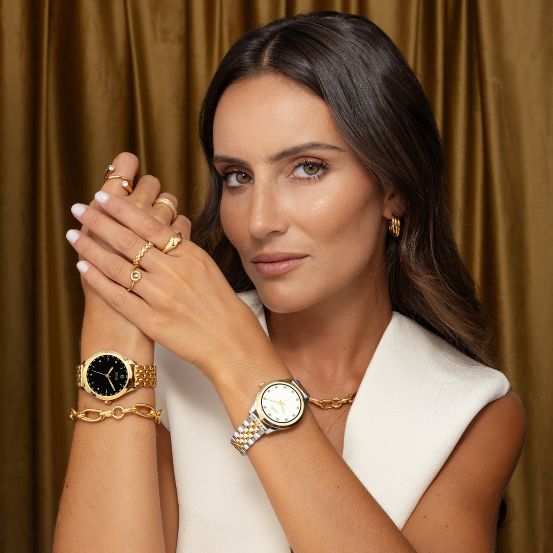There are those who say that, in times of crisis, people take refuge in the past; but there are also those who say that discomfort is the engine of innovation.
There are those who say that, in times of crisis, people take refuge in the past; but there are also those who say that discomfort is the engine of innovation.

I am not thinking about fashion, particularly, but rather looking at the wider universe, where fashion is included, that we call culture. In remembering times of distress, like the present, I try to discover what these times indicate to us about behavior - in the arts, in ideas, in appearances, and spirits. Perhaps there are clues to what lies ahead. I remember the 1960s (yes, I have many years "of this") and how that time was one of joy and hope. It seemed that the world was moving inexorably towards the better: more freedom, creative and otherwise, more understanding, peace and love, flower power, and universal happiness. Technology was moving in the direction of good; new synthetic materials provided exuberant fashions and fantastic architecture; urban planning favored green spaces, vaccines guaranteed health, love knew new forms, and conservative ideas were horrified but no longer had the strength to impose themselves. The contrast with this present time is chilling. The world is divided - radical, a new word that applies to everything - we live with plague, war, inequalities in plain sight, inflation, energy shortages, threatening pollution, bad losses, and no gains. Architecture has no human scale, fashions dissolve, and art brings no evasion. I am tired of being at home and don't feel like going out.
When I read about a historical time longer than my lifetime, I find that periods of euphoria have always alternated with periods of depression. History does not walk in a straight line drawn by fate, it circles between near apocalypse and paradise in sight. After the Great War of 1914-18, in which millions of people died, coupled with the pneumonics of 1918-20, there followed a period of euphoria, lavish parties, art deco, and daring fashions. Josephine Baker in a banana thong, the utopian futurism of Metropolis and the steel woman (1927), the evenings depicted in Babylon Berlin. Then came the Great Depression (1929-39), which did not stop the superfluous for those who could. And here we have a reference, from fashion diva Elsa Schiaparelli: "In hard times fashion is always surprising." That is, when things are bad, people look for provocative innovations. In hard times, one looks to the future. Then came another war, that of 1939-45, in which nothing was built, everything was destroyed on an industrial scale. In the post-war, period of relief, a second modernism emerged, the Dior style, penicillin, a major upgrade in living standards. And a change in fashion, which I find deplorable: men stopped wearing those elegant felt hats of the interwar period... And here we have the opposite situation: easy times generate innovations - not provocative, but comfortable, and soft.
Am I contradicting myself? Or am I coming to a historical contradiction? When Napoleon became emperor in the 1800s, the magnificent neo-classical imperial style emerged, women's waists rose to below their prominent breasts, hats took on feathers, and painting became sumptuously allegorical. However, after the general massacre that was the Napoleonic wars, a dark, moralistic aesthetic period of restrained, almost embarrassed luxury entered. There was no return to the past, but neither was the future illuminated. The 19th century, the first with exponential technical innovations, was an intense cultural period - in music, Chopin, Grieg, Strauss, and so many others, in painting, the impressionists, the fauvists - towards the end, art nouveau and abstractionism, Kandinski. In this situation, it was the absence of crisis that caused evolution.
When I look at the great creative moments centered on a geographical point - another way to look for whether it is distress or peace of mind that moves culture forward or backward - I also encounter contradictions. The birth of romanticism, this return to the mythical past, occurred precisely in Jena, a tiny German town, with Goethe, Schiller, Humbolt, and others, in a period of great distress, at the turn of the 18th to the 19th century. On the other hand, an important advance in modernity, happened precisely in Bloomsbury, a suburb of London, in the post-World War I period, with Virginia Woolf, E. M. Forster. Clive Bell (and even John Maynard Keynes, creator of modern economics), and went on during a period of peace and quiet.
Another "here and now" that went around the world was the hippie movement, which sprang up spontaneously in the 1960s in the Bay Area around San Francisco, California, with Frank Zappa, the Grateful Dead, the Chambers Brothers, and so many others. Although it was a movement against - the war, the nastiness, and the rancor - it was peaceful, with an eye to a happy future.
To complicate my head further, I see that the good and bad periods are not universally synchronized. Here in Portugal, the libertarian joy of the hippies corresponded to the "leaden years", isolated from the world, bound to medieval values. Women were not allowed to wear pants or miniskirts. The police cut our long hair. The posters on the street said "Drugs, madness, death." The colonial war was a terrifying imposition. I escaped the police, but when I went into the military in 1970, I was given a bald patch, rough clothes and carded boots, and a "mission" that represented nothing to my generation. That time of trouble did not correspond to a return to the past, but rather to a burning desire for the future. Culture, art, and innovation were not favored, and censorship was reinforced. My friends used to bring Le Monde newspaper and Rolling Stone magazine from Paris, I couldn't go there because they took my passport away. But after 1975, everything changed. A second revolution, cultural, followed the Revolution, and in the 1980s a group of creators emerged in Lisbon (in honor of Manuel Reis, who led and inspired them), the rebirth of crazy nights and creative days. In other words, the "desaflição" allowed us to look to the future and forget the past. It is not comparable to the other "here and nows" I mentioned because it was not about inventing a new world; it was about bringing the new world inside, bringing us up to speed with what was happening out there.
So where does that leave us? As much as I try to understand the world, I can only speak for myself. In bad periods, you think of nothing but getting out of them. You don't see any merit in the past, the promises, as well as the styles, the fashions, and the arts, are all waiting in the future. In good times, one lives that future. It seems to me that affliction stifles creativity, and well-being stimulates it. When the next golden age will be, I don't know - but I have a few ideas incubating, waiting for the inexorable turn of history.
Translated from the To be Continued on "The Velvet Touch" issue of Vogue Portugal, published December 2022.Versão portuguesa, aqui.
Relacionados
.jpg)


.jpg)

.jpg)

